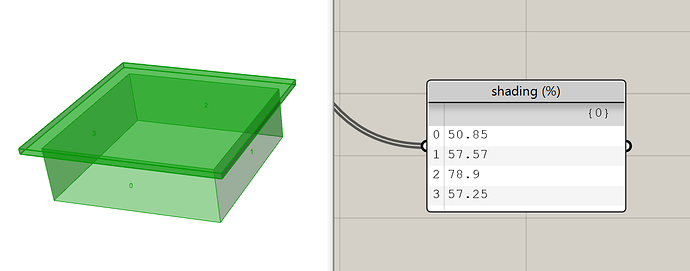Hey,
I’m using Ladybug to calculate photovoltaics performance in facade installations with Photovoltaics Surface. To consider shading into the calculations I run this component twice, and in the second run I include the shading percentage calculated with Sunpath Shading.
It seems to me - and that’s where I need your help! - that these shading values are too high. I set up a demo file with a simple building (attached: energycalculations3D_test.gh (475.9 KB) ) and I get a 23% shading value for the North facade (index 2):
The values are even worse when I add a simple roof over the building:
Of course I realize that the more obstacles there are in front of the installation, the higher the shading will be. Also, I’m aware that the shading percentage is calculated with the average of the surfaces’ 4 corner points, which also considers self-shading. But to me, a nearly 80% shading because of a roof seems really high, and it will decrease the output metrics by a lot.
So my question is, how can I avoid such a high shading value? There are some times when you just have shading elements, but that will not necessarily mean a huge decrease in the energy production.
And bonus question: isn’t the self-shading already considered in the radiation values? I may be totally wrong here but I thought that the radiation differences between a North and South facade for example, may be due to the self-shading of the building itself. If that’s so, wouldn’t then the shading be zero when there are no obstacles?
Thanks in advance for your help and ideas!
Cheers,
Elsa

